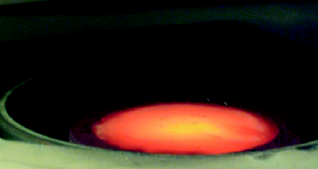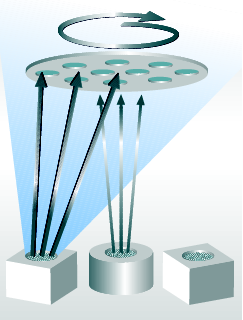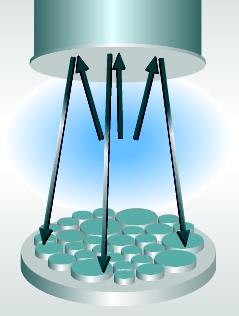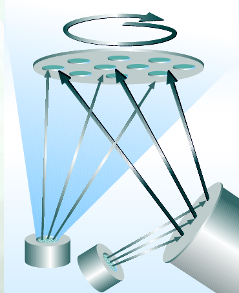
| DE / INT: | +49 - (0)36453 - 744-0 | US: | +1 707 4810216 |
| info@layertec.de | ussales@layertec.com |
Coating technology
Optical Coatings




Ions from the deposition source (middle) are accelerated to the target (right). Sputtered particles condense on the substrates (top). A second ion source (left) assists the process.
The subcategories introduce the physics behind dielectric an metallic coatings as well as the possibility to combine metallic and dielectric layers.
Thermal and Electron Beam Evaporation
Thermal and electron beam evaporation are the most common techniques for the production of optical coatings. LAYERTEC uses these techniques mainly for UV coatings. The evaporation sources are mounted on the bottom of the evaporation chamber. They contain the coating material which is heated by an electron gun (e-beam evaporation) or by resistive heating (thermal evaporation). The method of heating depends on the material properties (e.g. the melting point) and the optical specifications.
The substrates are mounted on a rotating substrate holder on top of the evaporation chamber. Rotation of the substrates is necessary to ensure the coating uniformity. The substrates must be heated to a temperature of 150–400°C, depending on the substrate and coating materials. This provides low absorption losses and good adhesion of the coating to the substrates. Ion guns are used to get more compact layers.
Properties of Evaporated Coatings
The energy of the film forming particles is very low (∼1eV). That´s why, the mobility of the particles must be enhanced by heating the substrates. Nevertheless, the packing density of evaporated coatings is relatively low and the layers often contain microcrystallites. This results in relatively high straylight losses (some tenth of a percent to some percent, depending on the wavelength).
Moreover, water from the atmosphere can diffuse into the coatings and out of the coatings depending on temperature and humidity. This results in a shift of the reflectance bands by ∼1.5% of the wavelength. Nevertheless, evaporated coatings have high laser damage thresholds and are widely used in lasers and other optical devices.
Sputtering
In general, the term “sputtering” stands for the extraction of particles (atoms, ions or molecules) from a solid by ion bombardment. Ions are accelerated towards a target and collide with the target atoms. The original ions as well as recoiled particles move through the material, collide with other atoms a.s.o. Most of the ions and recoiled atoms remain within the material, but a certain fraction of the recoiled atoms is scattered towards the surface by this multiple collision process. These particles leave the target and may then move to the substrates and form the film.
Magnetron Sputtering
The above mentioned ions are delivered by a gas discharge which burns in front of the target. It may be excited either by a direct voltage (DC-sputtering) or by an alternating voltage (RF-sputtering). In the case of DC-sputtering the target is a disk of a high purity metal (e.g. titanium). For RF-sputtering also dielectric compounds (e.g. titanium dioxide) can be used as targets. Adding a reactive gas to the gas discharge (e.g. oxygen) results in the formation of the corresponding compounds (e.g. oxides).
LAYERTEC has developed magnetron sputtering for optical coatings from a laboratory technique to a very efficient industrial process which yields coatings with outstanding properties especially in the VIS and NIR spectral range. Our largest magnetron sputtering plant can coat substrates up to a diameter of 500mm.
Ion Beam Sputtering
This technique uses a separate ion source to generate the ions. To avoid contaminations, RF-sources are used in modern IBS plants. The reactive gas (oxygen) is in most cases also provided by an ion source. This results in a better reactivity of the particles and in more compact layers.
The main difference between magnetron sputtering and ion beam sputtering is that ion generation, target and substrates are completely separated in the IBS process while they are very close to each other in the magnetron sputter process.
Properties of Sputtered Coatings
Because of the high kinetic energy (∼10 eV), i.e. high mobility, of the film forming particles, sputtered layers exhibit:
- an amorphous microstructure and
- a high packing density (which is close to that of bulk materials)
This results in:
- low straylight losses
- high thermal and climatical stability of the optical parameters
- high laser induced damage thresholds
- high mechanical stability
No external heating is necessary to produce oxide layers with minimum absorbance.
